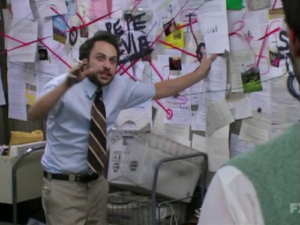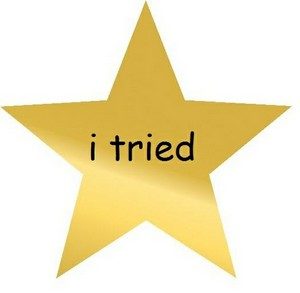
I Tried.jpg
(Pictured here is me internally screaming inside as I try to figure this all out.)
Ok, I’m going to try (emphasis on try) to take a stab at this whole theory of writing thing, so please bear with me as I try to get my thoughts together.
The Metaconcept reading brought up a lot of good points about this idea of reading and writing. I liked what it said about how writing (and by extension, reading) “connect[s] us to other people across time and space” (18). It is a conversation happening even when we aren’t thinking about it, yet we are influenced by past experiences, audiences, and purpose. Audience and purpose as we discussed in class become these big motivating factors for the things that we want to convey in what we write so that we may be understood. Which brings me to one major point in the reading that I thought was interesting in section 1.4 about using words to define other words. This got me thinking about how this theory could be applied in terms of trying to communicate with others whose first language isn’t your own. As someone who grew up in a bilingual home, sometimes it was necessary to use other words to define and the explain the meaning of the word I was describing in a certain context to create better understanding.
In doing that the conversation no longer became one sided or misunderstood but rather it became a shared one in which both speakers come to be on more or less equal footing and I think that writing can function in that same way. As quoted in the reading, “language lies on the borderline between oneself and the other. The word in language is half someone else’s.” (25). I really like that quote because it made me realize how social writing is. That even when I’m writing for myself, there is still a conversation that is shared between what is written and the one who is reading it. Of course, as we discussed in class, the tone of of our writing shifts and changes based on the situation, the audience, and the purpose. Things like the internet and social media are the main examples of how social writing can be and rather than blurring] “the boundaries between writer and audience” (21) like stated in the reading, I think in having that social aspect it allows for the conversation to be expanded on. It allows for new voices and different experiences to shape our understandings and to contribute (well, most of the time, if exempting trolls, haters, and what have you) something to the conversation at hand.
Possible theory: Writing is a complicated process heavily influenced by our experiences as much as it is influenced by our motivations and intended audiences. It is a process that relies on the writer and the reader to reach a level of understanding between one another in order to effectively create a better conversation and a more fluid exchange of ideas.
I say possible because like all theories, mine is also subject to change as I continue to get a better understanding of these topics and continue to learn more as the class goes on. I’d like to consider this as more of a starting point, which to be honest was more than I had like a day ago but I digress.
Anyway, this turned out to be a convoluted mess of a post that I’m not sure made sense, which is funny given what I was saying about mutual writer-reader understanding just a few lines above but well…


2 Replies to “I Tried.jpg”
Marie! I don’t think this is convoluted at all. In fact, you do such a nice job of exploring the social nature of writing, particularly as a relationship between reader(s) and writer. Taking the social turn further, we can argue that all literacies are situated in human activity; literacies are never simply an individual skill. The literacies have a history of use that arise from cultures and those histories shape how we use reading and writing, and maybe why shifts in use trouble people (“That’s not how I use reading and writing…!”).
It could be so interesting to follow your ideas about the “expanse of conversations.” How ideas are taken up in social media, even following how the ideas are derailed or extended by trolls and haters.
Finally, I always appreciate hearing about home literacies, so thank you for the example of how meaning is made through the words we place alongside other words. Lovely.
This was really interesting to see your take on section 1.4 and how it’s effected you. I personally did not find 1.4 very relevant to my writing so it’s cool to read how that concept has affected people differently. The difference in our theories was also quite fun to see but how our theories are also quite similar in the sense that we both believe writing to be a way to achieve something or reach others. Nice pictures by the way!